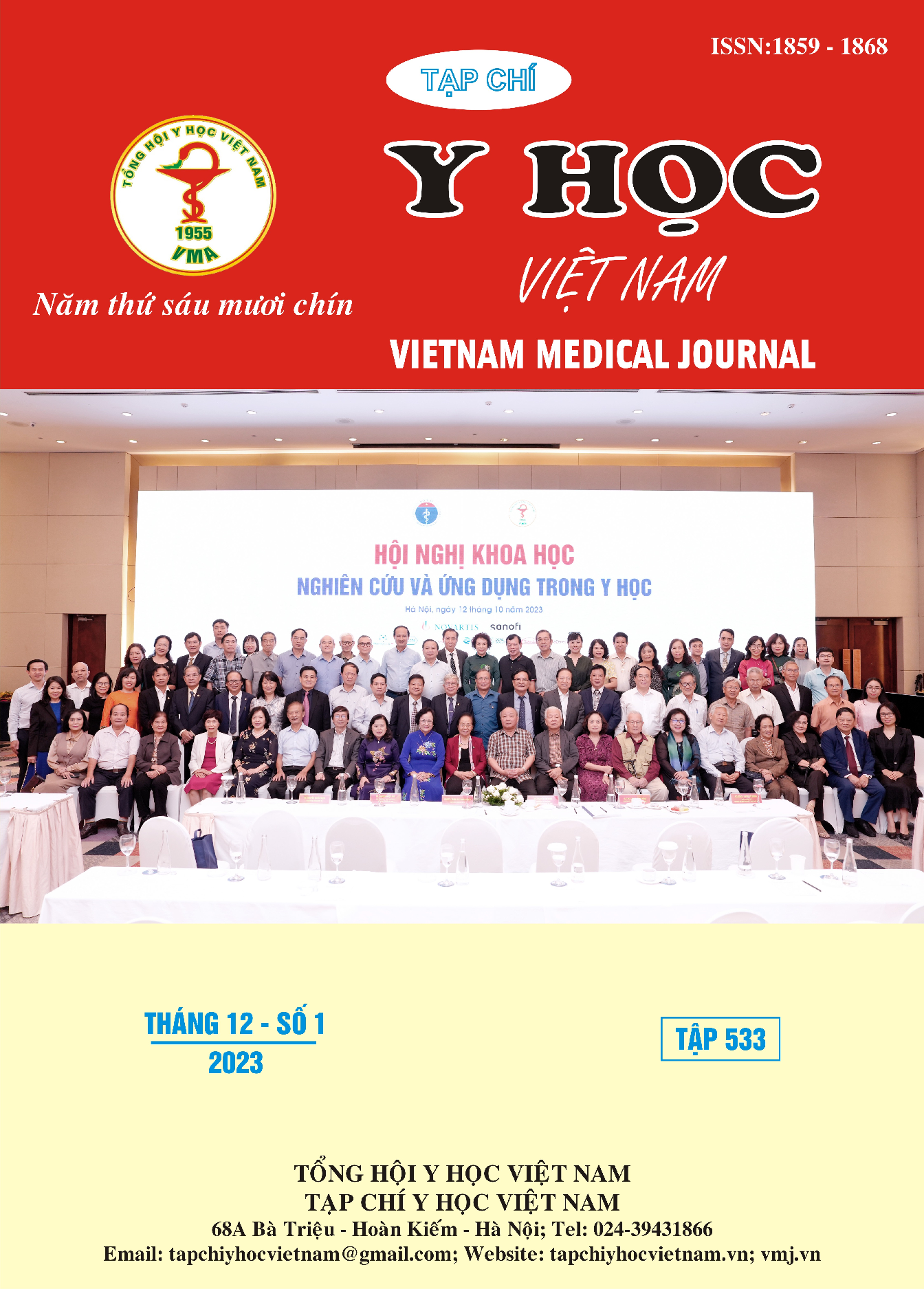MỘT SỐ YẾU TỐ ẢNH HƯỞNG ĐẾN KẾT QUẢ PHẪU THUẬT CẮT TOÀN BỘ TUYẾN TIỀN LIỆT DO UNG THƯ GIAI DOẠN KHU TRÚ
Nội dung chính của bài viết
Tóm tắt
Mục tiêu: Đánh giá một số yếu tố ảnh hưởng đến kết quả cắt toàn bộ tuyến tiền liệt do ung thư giai đoạn khu trú tại Bệnh viện Hữu Nghị Việt Đức từ 01/2015 - 01/2023. Đối tượng và phương pháp: nghiên cứu mô tả có phân tích trên 64 bệnh nhân được phẫu thuật mở cắt toàn bộ tuyến tiền liệt. Chỉ tiêu nghiên cứu gồm tuổi, BMI, bệnh kèm theo, rối loạn tiểu tiện trước mổ theo IPSS, nồng độ PSA toàn phần trước và sau mổ, điểm Gleason. Chức năng giữ nước tiểu và rối loạn cương dương sau mổ 12 tháng. Kết quả: Điểm Gleason càng cao, giai đoạn u sau mổ càng muộn thì tỷ lệ tái phát sinh hóa sau mổ càng nhiều. Tiểu không kiểm soát sau mổ 12 tháng ở 2 nhóm bảo tồn và không bảo tồn thần kinh cương dương khác biệt không có ý nghĩa thống kê (p>0,05). Nhóm BN phẫu thuật có bảo tồn bó mạch thần kinh cương dương thì tình trạng cương dương sau mổ phục hồi tốt hơn (p < 0,05). Kết luận: Các yếu tố ảnh hưởng khả năng tái phát sinh học sau mổ là điểm số Gleason và mức độ xâm lấn tại chỗ của ung thư. Yếu tố ảnh hưởng rối loạn cương sau mổ là bảo tồn bó mạch thần kinh cương dương khi phẫu thuật.
Chi tiết bài viết
Tài liệu tham khảo
2. Ahmed Magheli, Mark L. Gonzalo, Liming Su, Thomas J. Guzzo (2010). Impact of surgical technique (open vs laparoscopic vs robotis assisted) on pathological and biological outcomes following radical prostatectomy: an analysis using propensity score matching. BJU International, 107: 1956-1962.
3. Francesco Greco, Sigrid Wagner, M Raschid Hoda, Felix Kawan (2010). Laparoscopic vs open retropubic intrafascial nerve sparing radical prostatectomy: surgical and functional outcomes in 300 patiens. BJU International, 106: 543-547.
4. A. G. Renehan, M. Tyson, M. Egger và cộng sự (2008). Body-mass index and incidence of cancer: a systematic review and meta-analysis of prospective observational studies. The lancet, 371 (9612), 569-578.
5. W. C. Buschemeyer III và S. J. Freedland (2007). Obesity and prostate cancer: epidemiology and clinical implications. European urology, 52 (2), 331-343.
6. M. Jefferson, R. R. Drake, M. Lilly và cộng sự (2020). Co-morbidities in a retrospective cohort of prostate cancer patients. Ethnicity & Disease, 30 (Suppl 1), 185.
7. Vũ Nguyễn Khải Ca, Hoàng Long, Nguyễn Hoài Bắc và cộng sự (2012). Nhân 8 trường hợp cắt toàn bộ tiền liệt tuyến tận gốc tại Bệnh viện Việt Đức. Y Học TP. Hồ Chí Minh, 16 (3), 169-173.
8. Nguyễn Tiến Đệ và Vũ Lê Chuyên (2012). Phẫu thuật tuyến tiền liệt tận gốc qua nội soi ngoài phúc mạc: Biến chứng phẫu thuật. Y Học TP. Hồ Chí Minh, 16 (3), 93-97.
9. S. J. Freedland, A. W. Partin, J. I. Epstein và cộng sự (2004). Biochemical failure after radical prostatectomy in men with pathologic organ‐confined disease: pT2a versus pT2b. Cancer: Interdisciplinary International Journal of the American Cancer Society, 100 (8), 1646-1649.
10. D. Cao, A. S. Kibel, F. Gao và cộng sự (2010). The Gleason score of tumor at the margin in radical prostatectomy is predictive of biochemical recurrence. The American journal of surgical pathology, 34 (7), 994-1001.


